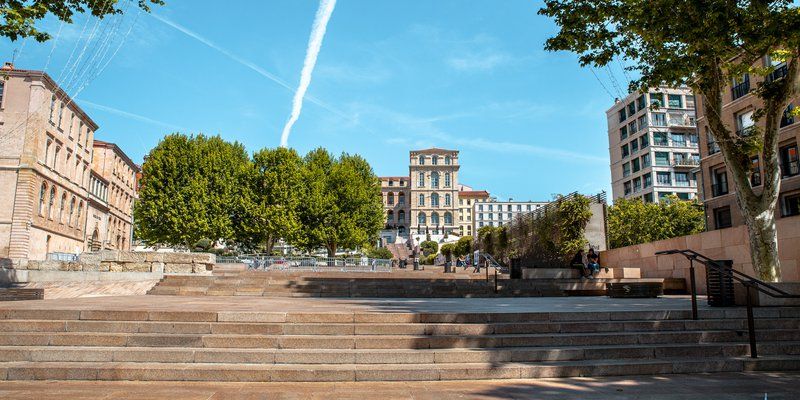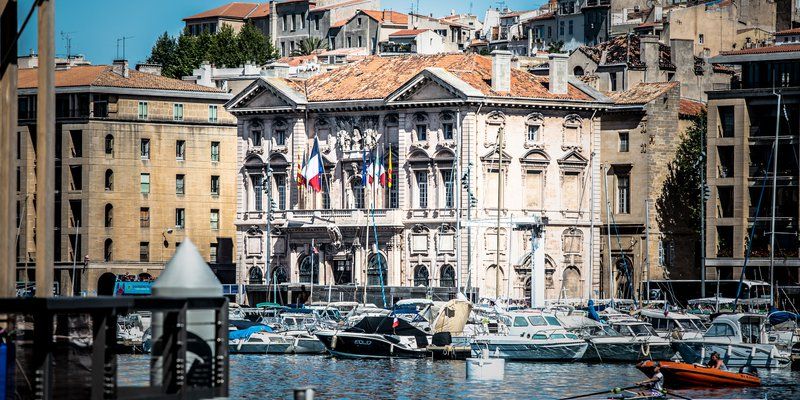The Daviel Pavilion construction
The Daviel Pavilion is located just next Marseille City Hall, in the Panier district, in the 2nd arrondissement. It will immerse you in Marseille's history. Previously, this place was the location of the first Law Courts. It was built in 1576 before being renovated in 1618. But, from the 18th century, the building was too small and a decree of the King's Council ordered the construction of a new Court House. The municipality plans to build the new Court House at La Canebière, but for economic reasons, it was decided that it would be built on the same site as the old one. To save space, some neighbouring houses were bought by the city, notably the semi-detached house, doubling the surface area of the site. In fact, did you know that to finance the project, the City Council decided to tax the wheat sold to the city?
The building was built by the Gérard brothers, architects from Marseille. It was only in 1747 that the new Court House opened its doors. The building was made of pink stones extracted from the La Couronne quarries. The building's façade is decorated with an allegorical pediment above the city's emblem. Wall sculptures represent justice through a hand, the torch of Themis, the King's arms represented by angels which were damaged during the Revolution. The first floor includes a superb ironwork balcony designed by the sculptor Jean-Michel Verdiguier. He also created all the building's sculptures. It was from there that the death sentences were pronounced, while the guillotine was in the square.
The Daviel Pavilion through History
The Court House assumed its judicial function from 1747 to 1862, before being transferred to Place Montyon, where it is still located today.
The building owes its name to Jacques Daviel, King Louis XV's surgeon and renowned ophthalmologist. He is known worldwide for having performed the first cataract operation as early as 1745. The story of this character is not very well-known. In 1720, following the plague epidemic which decimated half of the city's population, Jacques Daviel, who was then studying in Paris at the Hôtel Dieu, left the capital and decided to move to Marseille. He is one of the volunteers who came to fill the medical gaps caused by the many victims of the disease. You can still see a bronze statue of Daviel in the square of the same name today. He also owns a street named after him in Paris. But from 1793 to 1794, this place was the scene of executions. If the place can be visited today, in the past it was feared because you could lose your head. It was indeed the place where the guillotine stood, in the middle of the square. This was the end of the road for the revolutionary convicts during the Terror period. The basements of the building were also used as a prison, which gave its name to the street just behind, which became Rue de la Prison.
The Pavilion housed the medical school from 1875 to 1893. Today, the offices house the additional services of the town hall, and public benches replaced the guillotine. Even today, Pavillon Daviel is still connected to the Bargemon Pavilions and the Espace Bargemon by its basement. Overlooking the town hall, a stone's throw from the Old Port, it attracts a large number of visitors, particularly in connection with the development of the district.
Its roofs and facade were classified as a Historic Monument in 1945.
Feel free to make a little detour and come and admire its magnificent facade full of history!
And why not explore Marseille in a different way? The Petit train de Marseille, a bike rental or a segway rental will make you visit the Phocaean city in a new way!



